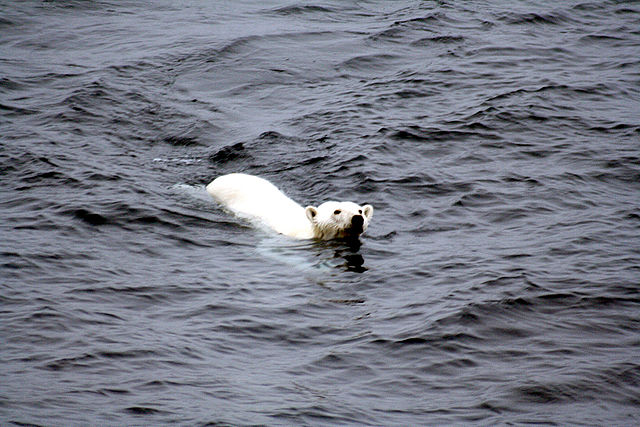
On the beginning of September, the five polar bear range states – Canada, Kingdom of Denmark (Greenland), Norway, Russia, and the United States – have met in Ilulissat (GL) and committed themselves to a 10-year plan that aims to secure the long-term survival of polar bears in the wild.
If back in 1973, when the Parties signed the "Agreement on the Conservation of Polar Bears", the largest threat to the polar bear was over-hunting, now the Parties have agreed that a new and larger threat had emerged: climate change. As the Executive Summary reads: "In 1973, Canada, Denmark, Norway, the United States and the Union of Soviet Socialist Republics signed the Agreement on the Conservation of Polar Bears (hereafter, the Agreement). The representatives of the Parties (Canada, Greenland, Norway, Russia and the United States) note that at that time the largest threat to the polar bear (Ursus maritimus) was over-hunting, which had led to the severe depletion of some of the subpopulations within their range. As a result of coordinated international efforts and effective management actions by the Range States, polar bear numbers in some previously depressed populations have grown. In 2009, it was recognized by the Parties that a new and larger threat had emerged: climate change. This Circumpolar Action Plan (hereafter, the Plan) — a collaborative Range States initiative — provides a means of coordinating the management, research and monitoring of polar bear across its range and ensures that the Range States share common goals and approaches to conservation efforts. Recognizing the effective management systems already in place, the Plan focuses on issues that are best handled at the international or bilateral level. While this first Circumpolar Action Plan is a 10- year plan, it will be revised and renewed as long as is needed. Progress of the Plan will be evaluated and made public every two years."
The overarching vision of the Plan is:
To secure the long-term persistence of polar bears in the wild that represent the genetic, behavioral, life-history and ecological diversity of the species.
The vision reflects the Range States' position that polar bear conservation is a shared responsibility and that it is crucial for ecological reasons, and recognizes the importance of the polar bear to indigenous peoples of the circumpolar Arctic. In order to realize the vision, the Range States have developed six key objectives:
- Minimize threats to polar bears and their habitat through adaptive management based on coordinated research and monitoring efforts, use of predictive models and interaction with interested or affected parties;
- Communicate to the public, policy makers, and legislators around the world the importance of mitigating GHG emissions to polar bear conservation;
- Ensure the preservation and protection of essential habitat for polar bears;
- Ensure responsible harvest management systems that will sustain polar bear subpopulations for future generations;
- 5. Manage human-bear interactions to ensure human safety and to minimize polar bear injury or mortality;
- 6. Ensure that international legal trade of polar bears is carried out according to conservation principles and that poaching and illegal trade are curtailed
Read Circumpolar Action Plan here.